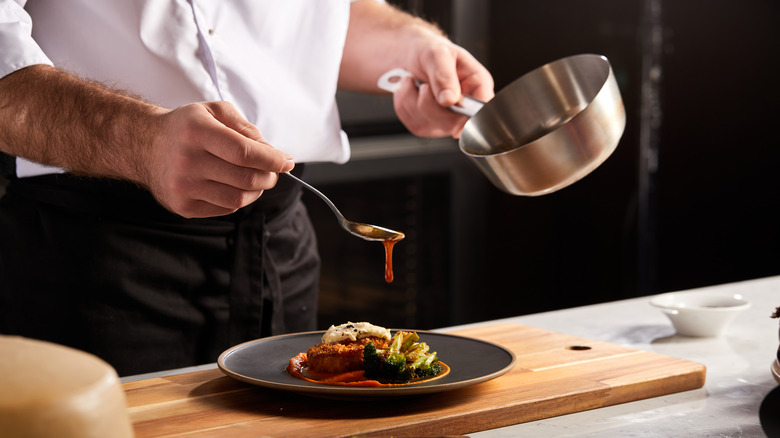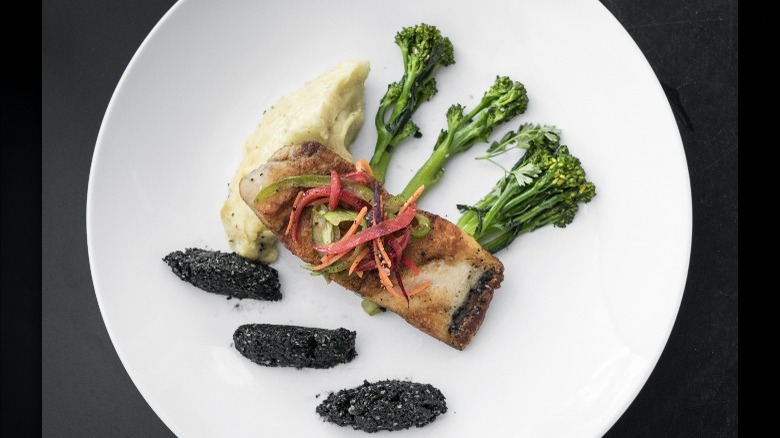Why Foods Are Plated On A Curve In Fancy Restaurants
We could regale you with a Rolodex of idioms to the effect of "beauty isn't just skin-deep," but the sentiment rings especially true in the culinary world. Anthony Bourdain tells Food & Wine at length about the unsung glory of "ugly but good" food. "When I'm eating a perfectly fried whole artichoke in Rome, a pile of freshly cracked crabs in Seattle, or a pornographic selection of cheeses in France[,] I know well the seductive power of a visually stunning food image," says the chef. "But I also know that some of the most inherently delicious food has been pickled, butchered, braised, stewed, and/or charred in a way that maximizes flavor, visual appeal be damned."
In a Tasting Table Exclusive Survey, 55.1% of readers said that the best part about eating at a fancy restaurant is the food. Ambiance, service, dressing up, and getting to skip cooking are fun experiential accouterments, said our readers, but a nice meal out is all about the meal itself. But there might be something more behind the value of a pretty plate. According to a study by culinary institution Johnson & Wales University, 29% of restaurant-goers said good plating makes the food itself taste better. The first step to pretty plating, says Unilever Food Solutions, is to create a framework. In many fancy restaurants, that framework is a lavish curve that swoops through the center of the plate or encircles its circumference. So, why are foods plated on a curve in fancy restaurants?
Simple yet effective
According to Thomas Keller, the chef behind world-renowned restaurants Per Se and French Laundry, effective plating should showcase the cook's culinary prowess and the quality of the ingredients. "The less on the plate, the better," Keller says, via Today. In other words, a good dish speaks for itself, and overcomplicated plating can mute the message. Plating is an art, and negative space (aka the empty parts) draws the eye to the food on the plate. Enter: The curve.
In fancy restaurants, curved plating is simple enough to be quickly executed on a busy night, explains The Culinary Pro. Yet, it's stylish enough to make an impression. Arcs and curves create an illusion of movement and fluidity in a dish, as well as add the suggestion of height and dimension. It's also the reason why many fancy restaurants opt for round plates instead of square or rectangular ones, says The Kitchn. It's notoriously easier to make a dish look good on a circular plate. Artisanal cooking supplies purveyor La Tourangelle calls this "free-form plating," and maintains that asymmetry creates the most natural-looking presentation. Sauces and purees are often used to achieve this effect, delicately drizzled or smeared across a plate beneath a cut of meat or a perfectly-round hill of pasta.

